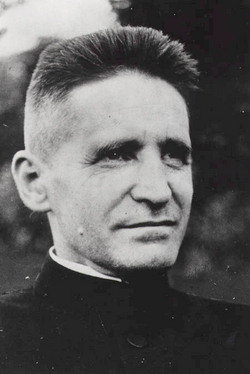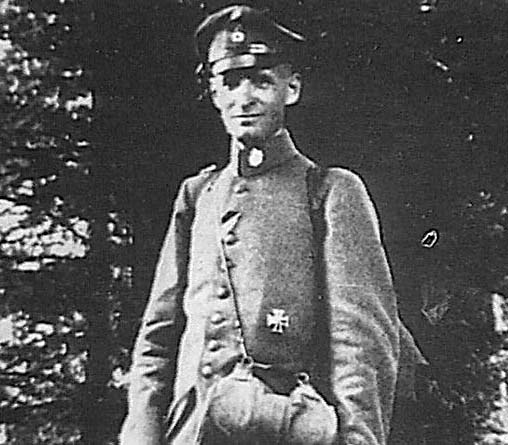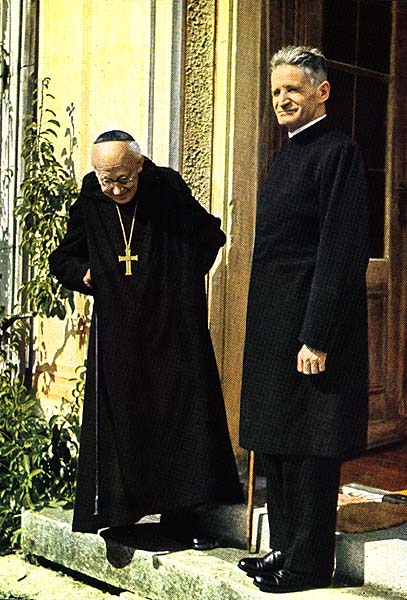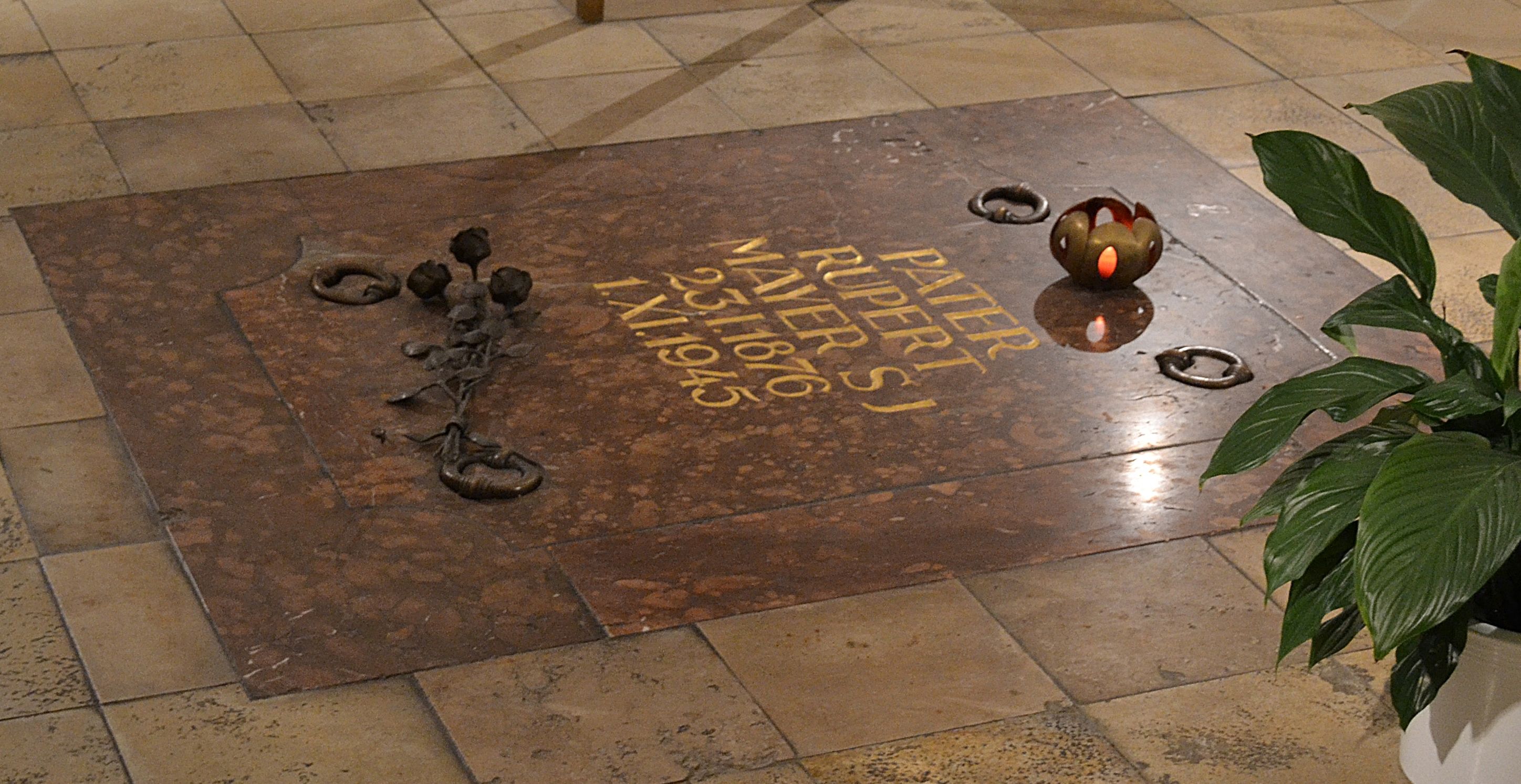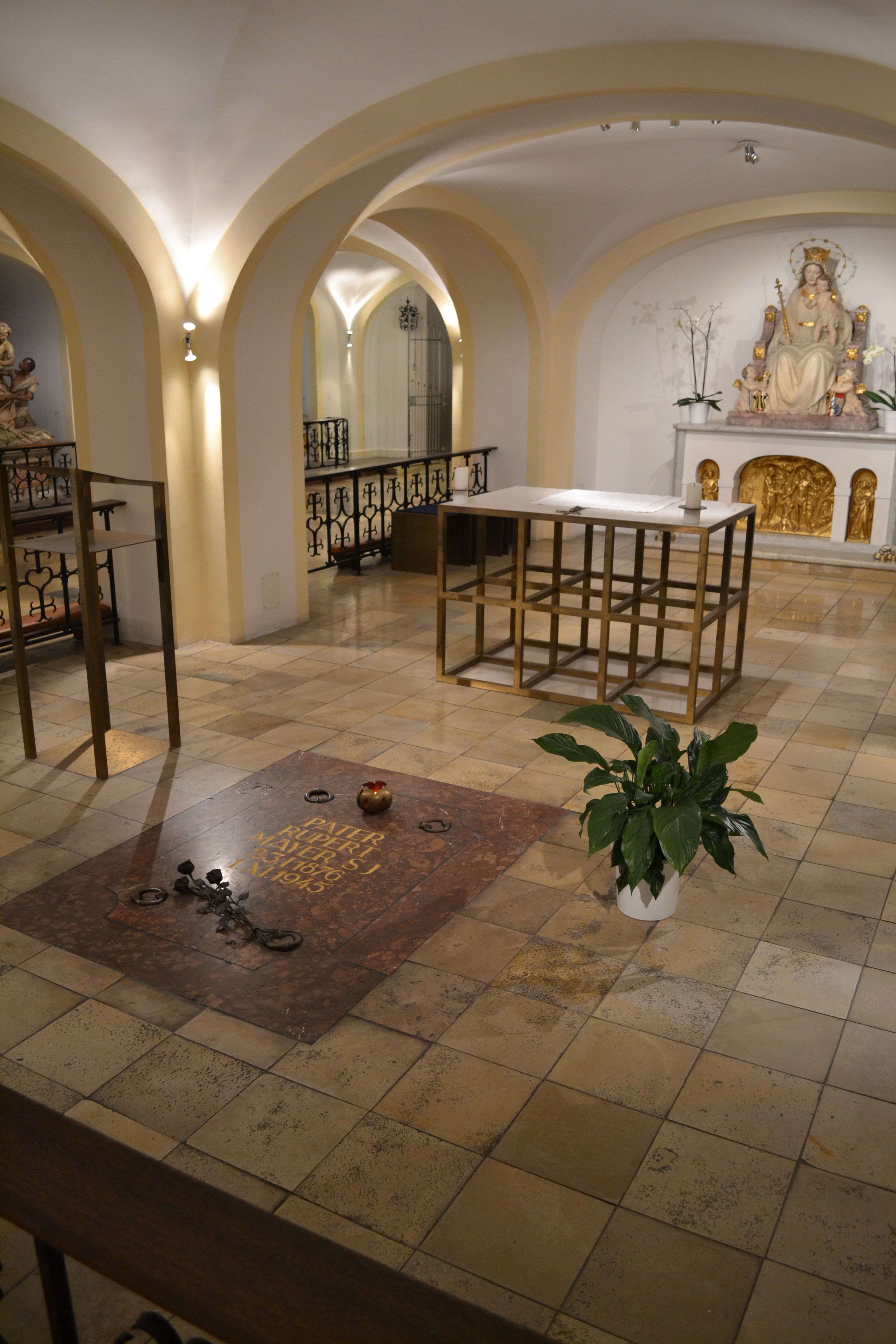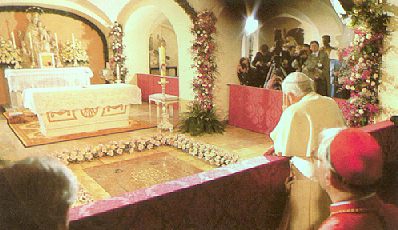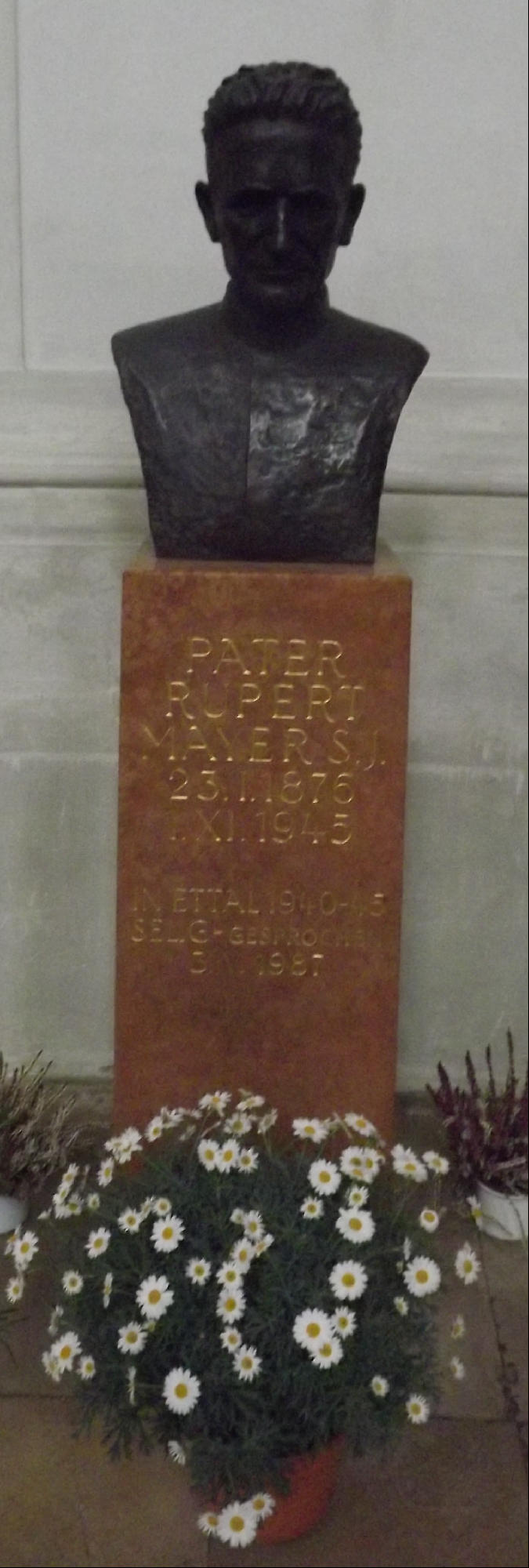From 1906, he moved about Germany, Switzerland, and the Netherlands as a people's commissioner. From 1914, Mayer served as chaplain at the front in the First World War. In 1916, he lost his left leg after it was injured in a grenade attack. He was the first chaplain to win the Iron Cross. He worked managing a clerical retreat, as a preacher, and as of 1921, as a leader of the Marian Congregation in Munich. In 1937, he found himself in "protective custody" for six months, and for seven months after that, he was in Sachsenhausen's concentration camp. He was released from there on the condition of a broad ban on preaching. Until the liberation by the US forces in May 1945, he lived Ettal Abbey. An American Officer returned him to Munich, we he received a hero's welcome.
He died on his feet on November 1, 1945, of a stroke, while he was celebrating Mass, in Munich. Facing the Congregation, uttering "The Lord, the Lord, the Lord". These were his last words.
Accompanied by thousands of mourners, Rupert Mayer was first buried at the Jesuitenfriedhof in Pullach. Due to the steady stream of pilgrims, his remains were moved to Munich in 1948 and were reburied in the Unterkirche of the Bürgersaalkirche, where his continued popularity as a Bavarian hero and intercessor is documented.
Rupert Mayer spoke out against anti-Catholic baiting campaigns and fought against Nazi Church policy. He preached that man must obey God more than men. His protests against the Nazis landed him several times in Landsberg Prison and in Sachsenhausen's concentration camp under the Kanzelparagraphen, a series of nineteenth century laws that forbade the clergy to make political statements from their pulpits. From late 1940, he was interned in Ettal Monastery, mainly because the Nazis were afraid that he would die in the concentration camp, and thereby become a martyr.
Rupert Mayer resolutely spoke out against the Nazi régime's evil in his lectures and sermons. Before the Sondergericht – one of Adolf Hitler's "special courts" – he declared: "Despite the speaking ban imposed on me, I shall preach further, even if the state authorities deem my pulpit speeches to be punishable acts and a misuse of the pulpit."
His time in prison and the concentration camp had taken its toll, as had the enforced inactivity while under house arrest at Ettal.
Since his death in 1945, Rupert Mayer's followers called for his beatification. In 1950, Cardinal Michael von Faulhaber opened the information process in the Archdiocese of Munich regarding the call to sanctity and virtues. In 1951, Jesuit Provincial Otto Faller completed and formally forwarded the beatification information to Rome.
In 1956, Pope Pius XII, who had personally known Father Rupert Mayer during his time as Papal Nuncio in Munich, awarded him the title Servant of God. Under Pope John XXIII, the beatification process was initiated, the results of which were formally accepted by Pope Paul VI in 1971. Under Pope John Paul II, the degree of heroic virtue was issued in 1983. Rupert Mayer was beatified by Pope John Paul II on May 3, 1987, in Munich.
Father Mayer's grave was visited by Popes John Paul II and Benedict XVI, whose parents had venerated him. Many faithful hope for his canonization, which requires a miracle to be accepted by Vatican authorities. In the meantime, people from all walks of life, visit the church in the centre of Munich every day, packed with their shopping bags, children, dogs and, their problems, asking for his intercession, or for a small moment of rest at his side.
In Bavaria and across the globe, numerous streets and Jesuit schools are named after Rupert Mayer. In 2006, Fordham University dedicated a chapel in his name at their Lincoln Center Campus in Manhattan, New York.
From 1906, he moved about Germany, Switzerland, and the Netherlands as a people's commissioner. From 1914, Mayer served as chaplain at the front in the First World War. In 1916, he lost his left leg after it was injured in a grenade attack. He was the first chaplain to win the Iron Cross. He worked managing a clerical retreat, as a preacher, and as of 1921, as a leader of the Marian Congregation in Munich. In 1937, he found himself in "protective custody" for six months, and for seven months after that, he was in Sachsenhausen's concentration camp. He was released from there on the condition of a broad ban on preaching. Until the liberation by the US forces in May 1945, he lived Ettal Abbey. An American Officer returned him to Munich, we he received a hero's welcome.
He died on his feet on November 1, 1945, of a stroke, while he was celebrating Mass, in Munich. Facing the Congregation, uttering "The Lord, the Lord, the Lord". These were his last words.
Accompanied by thousands of mourners, Rupert Mayer was first buried at the Jesuitenfriedhof in Pullach. Due to the steady stream of pilgrims, his remains were moved to Munich in 1948 and were reburied in the Unterkirche of the Bürgersaalkirche, where his continued popularity as a Bavarian hero and intercessor is documented.
Rupert Mayer spoke out against anti-Catholic baiting campaigns and fought against Nazi Church policy. He preached that man must obey God more than men. His protests against the Nazis landed him several times in Landsberg Prison and in Sachsenhausen's concentration camp under the Kanzelparagraphen, a series of nineteenth century laws that forbade the clergy to make political statements from their pulpits. From late 1940, he was interned in Ettal Monastery, mainly because the Nazis were afraid that he would die in the concentration camp, and thereby become a martyr.
Rupert Mayer resolutely spoke out against the Nazi régime's evil in his lectures and sermons. Before the Sondergericht – one of Adolf Hitler's "special courts" – he declared: "Despite the speaking ban imposed on me, I shall preach further, even if the state authorities deem my pulpit speeches to be punishable acts and a misuse of the pulpit."
His time in prison and the concentration camp had taken its toll, as had the enforced inactivity while under house arrest at Ettal.
Since his death in 1945, Rupert Mayer's followers called for his beatification. In 1950, Cardinal Michael von Faulhaber opened the information process in the Archdiocese of Munich regarding the call to sanctity and virtues. In 1951, Jesuit Provincial Otto Faller completed and formally forwarded the beatification information to Rome.
In 1956, Pope Pius XII, who had personally known Father Rupert Mayer during his time as Papal Nuncio in Munich, awarded him the title Servant of God. Under Pope John XXIII, the beatification process was initiated, the results of which were formally accepted by Pope Paul VI in 1971. Under Pope John Paul II, the degree of heroic virtue was issued in 1983. Rupert Mayer was beatified by Pope John Paul II on May 3, 1987, in Munich.
Father Mayer's grave was visited by Popes John Paul II and Benedict XVI, whose parents had venerated him. Many faithful hope for his canonization, which requires a miracle to be accepted by Vatican authorities. In the meantime, people from all walks of life, visit the church in the centre of Munich every day, packed with their shopping bags, children, dogs and, their problems, asking for his intercession, or for a small moment of rest at his side.
In Bavaria and across the globe, numerous streets and Jesuit schools are named after Rupert Mayer. In 2006, Fordham University dedicated a chapel in his name at their Lincoln Center Campus in Manhattan, New York.
Sponsored by Ancestry
Advertisement
Advertisement
